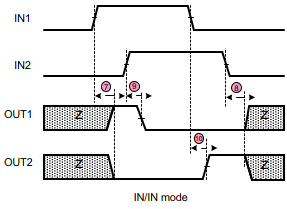Other Parts Discussed in Thread: , DRV8220
I have question about DRV8210, DRV8210P, and DRV8220.
These IC's dead time (tDEAD) are larger than propagation delay (tPD), but I have seen the other motor driver are almost tPD > tDEAD.
![]()
Please let me know about background for these IC spec become tPD < tDEAD.
And, is there spec information for timing diagram? (relation for tPD, tDEAD, etc)
Best regards,
Satoshi


